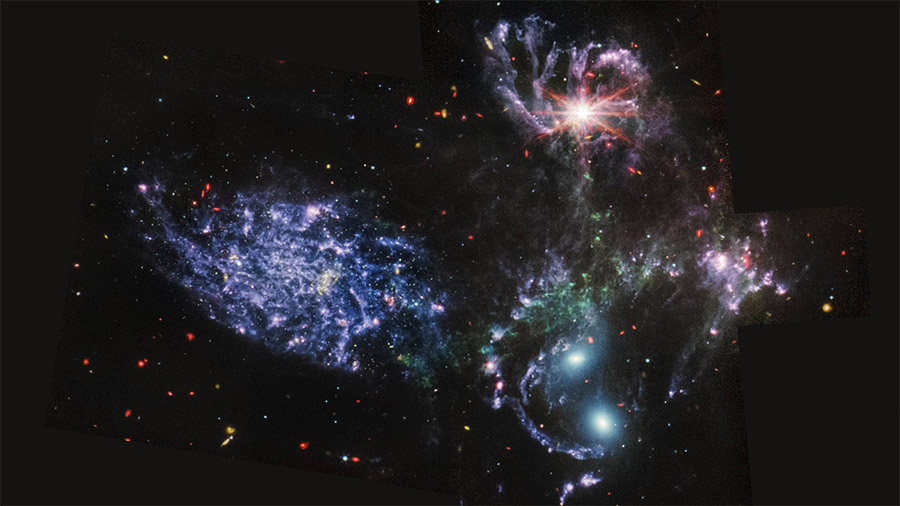New map of the universe’s cosmic growth supports Einstein’s theory of gravity
For millennia, humans have been fascinated by the mysteries of the cosmos.
Unlike ancient philosophers imagining the universe’s origins, modern cosmologists use quantitative tools to gain insights into its evolution and structure. Modern cosmology dates back to the early 20th century, with the development of Albert Einstein’s theory of general relativity.

Now, researchers from the Atacama Cosmology Telescope (ACT) collaboration have submitted a set of papers to The Astrophysical Journal featuring a groundbreaking new map of dark matter distributed across a quarter of the sky, extending deep into the cosmos, that confirms Einstein’s theory of how massive structures grow and bend light over the 14-billion-year life span of the universe.
The new map uses light from the cosmic microwave background (CMB) essentially as a backlight to silhouette all the matter between us and the Big Bang.
“It’s a bit like silhouetting, but instead of just having black in the silhouette, you have texture and lumps of dark matter, as if the light were streaming through a fabric curtain that had lots of knots and bumps in it,” said Suzanne Staggs, director of ACT and Henry DeWolf Smyth Professor of Physics at Princeton University. “The famous blue and yellow CMB image [from 2003] is a snapshot of what the universe was like in a single epoch, about 13 billion years ago, and now this is giving us the information about all the epochs since.”
“It’s a thrill to be able to see the invisible, to uncover this scaffold of dark matter that holds our visible star-filled galaxies,” said Jo Dunkley, a professor of physics and astrophysical sciences, who leads the analysis for ACT. “In this new image, we can see directly the invisible cosmic web of dark matter that surrounds and connects galaxies.” […]
Read more in the original article: Princeton University
🇵🇹 Versão portuguesa disponível aqui


Leave a Reply